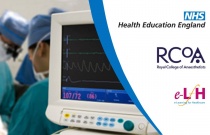Causes of Anterior, Middle and Posterior Mediastinal Masses
Helen Williams
0.75 Hours
This session covers imaging and diagnosis of paediatric mediastinal masses, and is organised based on their location in the mediastinum.
Cerebral Arteriovenous Malformations of the Brain
Robin Sellar
1.00 Hours
This session is an introduction to arteriovenous malformations (AVMs) of the brain and covers classification, pathology and angio-architecture, presentations, treatment options and risk.
Bone: Basic Concepts and Normal Bone
Jonathon Hill and Sobhan Vinjamuri
0.50 Hours
This is session is an introduction to the bone scan, including the details of the pharmaceuticals, the normal bone scan and variations.
Radionuclide Imaging to Determine Cardiac Function
Mohan K Hosahalli
0.25 Hours
This session gives a brief overview of radionuclide techniques in estimating left ventricular function. At the end of this session, you will be able to understand the principles of gated myocardial imaging, including gated equilibrium radionuclide ventriculography and gated myocardial SPECT. This session also covers the pitfalls....
Congenital Heart Defect
Mohan K Hosahalli
0.50 Hours
This session describes the role of nuclear medicine in the management of congenital heart defect (CHD).
Safe Handover of Patient to Recovery Team - Anesthesiology
Mai Wakatsuki and Maya Kai
0.50 Hours
This session aims to provide an overview and a strategy for effectively handing over anaesthetized patients to the recovery team.
Postoperative Nausea and Vomiting (PONV) - Anesthesiology
Seema Quasim
0.50 Hours
This session describes one of the most common postoperative problems, postoperative nausea and vomiting (PONV).
Assessment/Resuscitation/Differential Diagnosis - Anesthesiology
Guy Jordan
0.50 Hours
Overview of the approach to dealing with an unconscious patient.
Opioids In Paediatrics - Anesthesiology
Andrew R Wolf
0.50 Hours
This session looks at practical opioid pharmacology applied to the clinical use of different agents for neonates, infants and small children.
Risks and Risk Assessment for Staff - Radiology
Stephen Evans
0.50 Hours
This session describes how to calculate risks involving the use of ionising radiation in the workplace, the significance of the risks involved and how the risks can be reduced.
Painful Clicking Hip in the Adult - Radiology
Gregor Stonehouse
0.50 Hours
This session provides information on the use of plain films, computed tomography (CT) and magnetic resonance imaging (MRI) for imaging the hip in the symptomatic clicking hip in adults. The spectrum of relevant disease is reviewed and the efficacy of radiological techniques is discussed.
Detectors for Radiation Measurement
Andy Rogers
0.50 Hours
The safe use of radiation involves the measurement of various types of radiation over a range of doses and dose rates. This session will introduce you to the operation and application of radiation detectors used for such measurements.
Apnoeic Oxygenation and Differential Equations
Steven Cruickshank
0.50 Hours
This session focuses on apnoea and the process of modelling the physiology of apnoea. This uses simple mathematics to answer some fundamental questions about what happens when a patient stops breathing.
Atrial Fibrillation - Anesthesiology
Mike Ingram and Sarah Platt
0.50 Hours
Atrial fibrillation is the result of continuous and rapid activation of the atria by multiple asynchronous electrical impulses. This session reviews the aetiology, physiology and diagnosis of atrial fibrillation and the management decisions which relate to aetiology, chronicity and level of clinical risk. The session also explor....
Asthma - Anesthesiology
Leo Jeyaraj and Vicky Irvine
0.50 Hours
This session is designed to give the reader an overview of asthma and its implications for anaesthesia.
Day-case Surgery and Anaesthesia 1: Advantages and Organization
Andrew Burtenshaw and K-L Kong
0.50 Hours
As the first of three, this session aims to introduce the concept of day-case surgery as a package of care. Emphasis is placed upon the importance of every aspect of the patient journey in order to produce an efficient, effective and safe service, whilst maintaining quality of care. The advantages of day-case surgery and the key....
Propofol: An Overview - Anesthesiology
Jayantha Jayasuriya
0.50 Hours
This session will describe the indications for the use of propofol, its formulation and dosage, metabolic fate in the body and its effects on the different systems of the body. The side effects and contraindications of propofol will also be discussed.
Degenerative Disc Disease and Discogram IDET
Cenydd Thomas and Madeleine Sampson
0.50 Hours
A description of degenerative disc disease involving the spine with further details of discography and intradiscal electrothermal therapy (IDET).
Differential Diagnosis of Acromioclavicular Joint Erosion
Sarah Perrin
0.25 Hours
This session will describe the differential diagnosis of acromioclavicular joint (ACJ) erosion.
Proximal Humeral Fractures: Imaging Interpretation
Nigel Raby
0.50 Hours
This session covers proximal humeral anatomy and humeral injury exlains how to interpret plain film and computed tomography (CT) studies when dealing with common injury patterns.
Proximal Femoral Fractures
Martin Sambrook and Nigel Raby
0.50 Hours
This session covers the classification and identification of proximal femoral fractures. It highlights the key features of normal anatomy relevant to trauma, details the radiology and lists the pitfalls and variants. It also covers intracapsular/extracapsular and occult fractures and associated injuries such as the fractured pub....
Bone Lesions of the Diaphysis
T Muthukumar
0.75 Hours
In this session you will see a range of diaphyseal lesions. Images of aggressive and non-aggressive lesions are presented, together with explanations regarding the pathologies and their differential diagnoses.
Rapidly Growing Mass in the Thigh
Arthur Grey, David Gracey and Suchi Gaba (Editor)
0.75 Hours
This session discusses rapidly growing masses in the thigh, including bone and soft tissue lesions. It covers the imaging pathway and how to characterise a lesion.
Peritoneal Cavity, Omentum and Abdominal Wall
Katy Wessely and Jerry Healy
1.00 Hours
This session provides a description of the normal anatomy of the peritoneal cavity, retroperitoneum and abdominal wall in order to understand the modes of spread of disease.
























